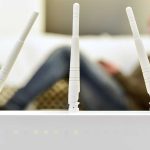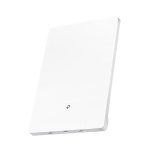To change your router channel quickly, log into your router’s settings and select a less congested Wi-Fi channel, usually 1, 6, or 11 on the 2.4 GHz band, or use a Wi-Fi scanner to find the best option. This simple tweak can dramatically improve your internet speed and stability.
Changing your router channel can resolve frustrating Wi-Fi problems caused by interference from neighboring networks. In just a few minutes, you can switch to a clearer channel, ensuring faster, more reliable internet. No need for technical expertise—just a few clicks will do the trick!
Struggling with slow or inconsistent Wi-Fi? Sometimes, it’s all about the channel your router operates on. Routers typically default to a certain channel, which can become crowded with nearby networks. By changing the channel, you can reduce interference and boost your signal strength. In this guide, I’ll walk you through easy steps to find and select the best channel for your network, so you can enjoy smoother surfing and streaming without interruptions.
How to Change Router Channel: A Step-by-Step Guide
Changing the Wi-Fi channel on your router can improve your internet connection by reducing interference from nearby networks. If your Wi-Fi is slow or drops frequently, adjusting the channel might be the solution. This guide will walk you through each step to change your router channel easily and effectively.
Understanding Wi-Fi Channels and Why They Matter
Wi-Fi routers operate on specific channels within the 2.4 GHz and 5 GHz frequency bands. Overlapping channels can cause congestion, leading to slower internet speeds or connection drops.
Choosing the right channel means selecting one with less traffic from neighboring networks. This results in a cleaner signal and faster internet performance for your devices.
Basics of 2.4 GHz and 5 GHz Networks
- 2.4 GHz band: Covers a broader area but is more prone to interference due to many devices using this frequency.
- 5 GHz band: Offers faster speeds and less interference but has a shorter range.
Commonly Used Wi-Fi Channels
| Band | Channels | Interference | Ideal Use |
|---|---|---|---|
| 2.4 GHz | Channels 1, 6, 11 | High interference if neighboring routers use the same | Basic browsing and devices far from router |
| 5 GHz | Multiple channels (36, 40, 44, 48, etc.) | Less interference, more options for less crowded channels | Streaming and gaming requiring higher speeds |
Why Changing the Router Channel Can Improve Your Wi-Fi
Interference from other wireless networks or devices can slow down your internet. By switching to a less crowded channel, you can experience better speeds and more stable connections.
This is especially helpful in densely populated areas where many Wi-Fi networks overlap.
Signs You Need to Change Your Router Channel
- Slow download or upload speeds
- Frequent Wi-Fi disconnections
- Intermittent buffering when streaming videos
- Difficulty connecting devices to Wi-Fi
How to Check Which Wi-Fi Channels Are in Use
Before changing your channel, see which channels are busy nearby. This way, you can select the least congested one for your network.
Using Built-in Router Tools
Many routers have a feature called “Wireless Analysis” or “RF Scan” in their admin interface. This tool shows the current channels used by neighboring networks.
Using External Apps and Software
- Wi-Fi Analyzer (Android): Free app that scans Wi-Fi networks and shows channel usage.
- NetSpot (Windows, Mac): Provides a detailed view of Wi-Fi channels and signal strength.
- inSSIDer (Windows): Useful for analyzing Wi-Fi environments and identifying less congested channels.
Accessing Your Router Settings
To change your Wi-Fi channel, you first need to log into your router’s admin panel. Usually, this is done through a web browser.
Steps to Log In
- Connect your device to the router via Wi-Fi or Ethernet cable.
- Open a web browser and type your router’s IP address (common ones are 192.168.1.1 or 192.168.0.1).
- Enter your username and password. The default credentials are often “admin” for both, unless you changed them.
Finding Your Router’s IP Address
On Windows, open Command Prompt and type ipconfig, then look for the “Default Gateway” IP address. On Mac, go to Network settings and view your router’s IP address.
Changing the Wi-Fi Channel on Your Router
Step-by-Step Instructions
- Log into your router’s admin interface using your browser.
- Navigate to the Wireless Settings or Wi-Fi Settings section.
- Locate the channel settings, often labeled as “Channel,” “Wireless Channel,” or similar.
- Select a different channel from the dropdown menu or list.
- Save or Apply the changes. Your router may restart briefly.
Choosing the Best Channel
Select the channel with the least activity from your Wi-Fi analysis. For 2.4 GHz, channels 1, 6, or 11 are usually best because they don’t overlap. For 5 GHz, pick a channel with the least nearby networks.
Verifying the Change and Monitoring Performance
Once you’ve changed your channel, check your Wi-Fi connection for improvements. Use speed tests and signal analysis tools to confirm better performance.
You may need to experiment with different channels to find the optimal one for your environment.
Additional Tips for a Stronger Wi-Fi Signal
- Place your router in a central location away from thick walls and metal objects.
- Keep your router firmware updated for better performance and security.
- Limit the number of devices connected simultaneously.
Additional Methods to Optimize Wi-Fi Performance
Using Dual-Band Routers
Dual-band routers broadcast on both 2.4 GHz and 5 GHz bands. Assign devices to different bands based on their needs for speed or range.
Creating a Wi-Fi Mesh Network
Mesh networks use multiple nodes to extend coverage, reducing dead zones and interference. This setup is ideal for large homes or offices.
Enabling QoS Settings
Quality of Service (QoS) prioritizes bandwidth for specific applications or devices, ensuring essential activities like video calls stay smooth.
Common Troubleshooting Tips
- Restart your router after changing the channel.
- Update router firmware regularly to improve functionality.
- Check for firmware updates through the admin panel.
- If interference continues, consider switching to a different frequency band or purchasing a new router.
By understanding how Wi-Fi channels work and following these steps, you can significantly enhance your internet experience. Regularly monitoring and adjusting your router’s channel settings helps maintain optimal performance.
Speed Up Your Home Wi-Fi by Changing ONE Simple Setting!
Frequently Asked Questions
How can I identify the best channel for my router to use?
To find the optimal channel, use a Wi-Fi analyzer tool to scan your area for less congested frequencies. These tools display which channels nearby networks are operating on, helping you choose a channel with the least interference for better connectivity.
What steps should I follow to change the Wi-Fi channel via my router’s settings?
Access your router’s admin panel by entering its IP address into a web browser. Log in with your credentials, navigate to the wireless settings or similar section, and locate the channel option. Select your preferred channel from the dropdown menu and save the changes. Your router will then restart with the new settings applied.
Is it necessary to restart my router after changing the channel?
While some routers automatically apply new settings without restart, others may require a reboot. It’s best to restart your router manually after changing the channel to ensure the new configuration takes effect properly and improves your Wi-Fi performance.
How often should I consider changing my router’s channel?
If you notice slow speeds or intermittent connections, regularly check for channel congestion and switch channels if needed. Changing your channel periodically can help maintain a stable and fast Wi-Fi connection, especially in densely populated areas with many networks.
Can using a 5 GHz band help reduce the need to change channels often?
Yes, the 5 GHz band usually has more channels available and experiences less interference compared to the 2.4 GHz band. Utilizing the 5 GHz network can reduce the frequency of channel switching and improve overall Wi-Fi performance, especially in crowded environments.
Final Thoughts
Pour changer le canal de votre routeur, connectez-vous à son interface admin via un navigateur web. Identifiez la section Wi-Fi ou sans fil, puis recherchez l’option de canal. Choisissez un canal moins encombré ou utilisez une application pour analyser le meilleur choix. Enregistrez les modifications et redémarrez le routeur si nécessaire.
En résumé, pour changer router channel, connectez-vous à l’interface, sélectionnez un nouveau canal et sauvegardez. Cela améliore la connexion Wi-Fi et réduit les interférences.




